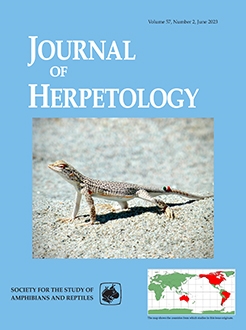Territory selection is critical to foraging, courtship, and numerous other aspects of vertebrate ecology. We tested the effect of conspecific density on territory choices and exploratory behavior in Eastern Red-backed Salamanders (Plethodon cinereus) given choices of unfamiliar territories marked by single, multiple, or no conspecifics. We tested two alternative hypotheses: 1) the presence of conspecifics signals high-quality habitat, because it appears to support one or more individuals, and 2) the presence of conspecifics signals effectively low-quality habitat, because that habitat is already occupied and therefore subject to higher levels of competition. Focal salamanders tended to enter unoccupied territories more frequently than those marked by an individual conspecific, but did not spend more time in unoccupied territories than those marked by individuals or groups. However, they spent more time in individual-marked territories than group-marked territories. Intruding salamanders exhibited a lower head move rate in individual-marked territories than in group-marked or unoccupied territories. Intruding females were more likely to enter shelters within territories, regardless of whether they appeared to be occupied, and made fewer large movements while in territories, than intruding males. These results suggest there is a greater perceived cost to intruding P. cinereus of inhabiting territories occupied by multiple conspecifics than territories occupied by individual conspecifics. Our study suggests that the net benefit of entering an occupied territory is lower for male salamanders compared to females and this difference likely stems from the greater value of shelters to females or a higher risk of competition for males.
BioOne.org will be down briefly for maintenance on 17 December 2024 between 18:00-22:00 Pacific Time US. We apologize for any inconvenience.
How to translate text using browser tools
14 December 2023
Effects of Conspecific Density on Habitat Assessment and Exploratory Behavior in Eastern Red-backed Salamanders (Plethodon cinereus)
Eli Haines-Eitzen,
Keith A. Tarvin
ACCESS THE FULL ARTICLE

Journal of Herpetology
Vol. 57 • No. 4
December 2023
Vol. 57 • No. 4
December 2023




